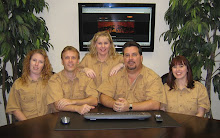1. Keep Your Visitors Awake
Many sites waste valuable space on their home pages with either a “welcome message from our CEO!” or an interminable mission statement – sometimes both. Most often, that’s about as interesting as reading the tax code, so visitors nod off before the page even finishes loading. Unless he’s just been indicted, few visitors are interested in a company’s CEO. Give him his own vanity page and bury it deep in the site.
But your mission statement can be useful in one respect. Use it to distill your Web site’s purpose into a single compelling statement that contains important keywords. Then feature that one-liner prominently on your home page. For instance, MarsupialWorld.com might say: “The World’s Largest Selection of Marsupial Statues!” – a phrase that’s sure to entice any collector of kangaroo or opossum art.
Use that one statement to pique visitors’ interest and encourage them to scan the rest of your home page to see exactly what you have to offer.
2. Make It Short And Simple
Visitors want useful information that is served up quickly in usable, scannable chunks. Don’t expect them to scroll down through 3 or 4 screens to find out about your products. Instead, try to fit your entire home page on a single screen.
Be succinct: you’re writing for the Web. Visitors have different expectations when they read online than they do when reading printed materials. It’s also more tiring to read online, so make it easy for visitors to find the information they want:
* Bulleted items: People often scan these first and ignore text in paragraph form, so include your most important points in bullet lists. You can even create custom bullets for more emphasis.
* Clearly defined sections: Use color, header tags, or horizontal rules to structure your page into sections.
* Columns: These are easier to scan than long lines of text that spread across the whole page.
* Short paragraphs: Make your major point early in the paragraph because people often won’t read the entire text.
Use these techniques to briefly describe what you’re offering and explain why it’s valuable. Then provide links so visitors who want more information can go deeper into the site. Your home page is the appetizer that makes visitors hungry for more.
3. Tell Them Where To Go
An understandable, easy-to-use navigation system is crucial because visitors hate to get lost on a site. Frustrated visitors leave and never come back. Take steps to make sure this doesn’t happen on your site:
* Accessible navigation: Give visitors multiple navigation options to avoid locking out visitors using assistive technologies, PDA’s, or non-graphical browsers. Navigation with image maps or JavaScript menus are fine as long as you always include text navigation as well. Keyboard shortcuts are very useful to visitors who use keyboard navigation instead of a mouse.
* Search function: Visitors love to be able to search a site to find the exact information or product they want. Fortunately, you don’t have to be a coding wizard to include one. Some Web hosts provide them; other free sources include Google, and FreeFind. Learn more about how Web site search tools work at the SearchTools.com site.
* Site map: This is a must for large, complex sites – but it’s often helpful for small sites that cover a variety of topics or whose organizational structure isn’t obvious. By the way, search engine spiders love them because a site map helps them index the entire site.
Your site navigation has to be easy to use. You’re wasting your time tantalizing visitors with exciting copy on your home page if they get lost while trying to learn more.
Learn more at The Media Zoo – Web.





No comments:
Post a Comment